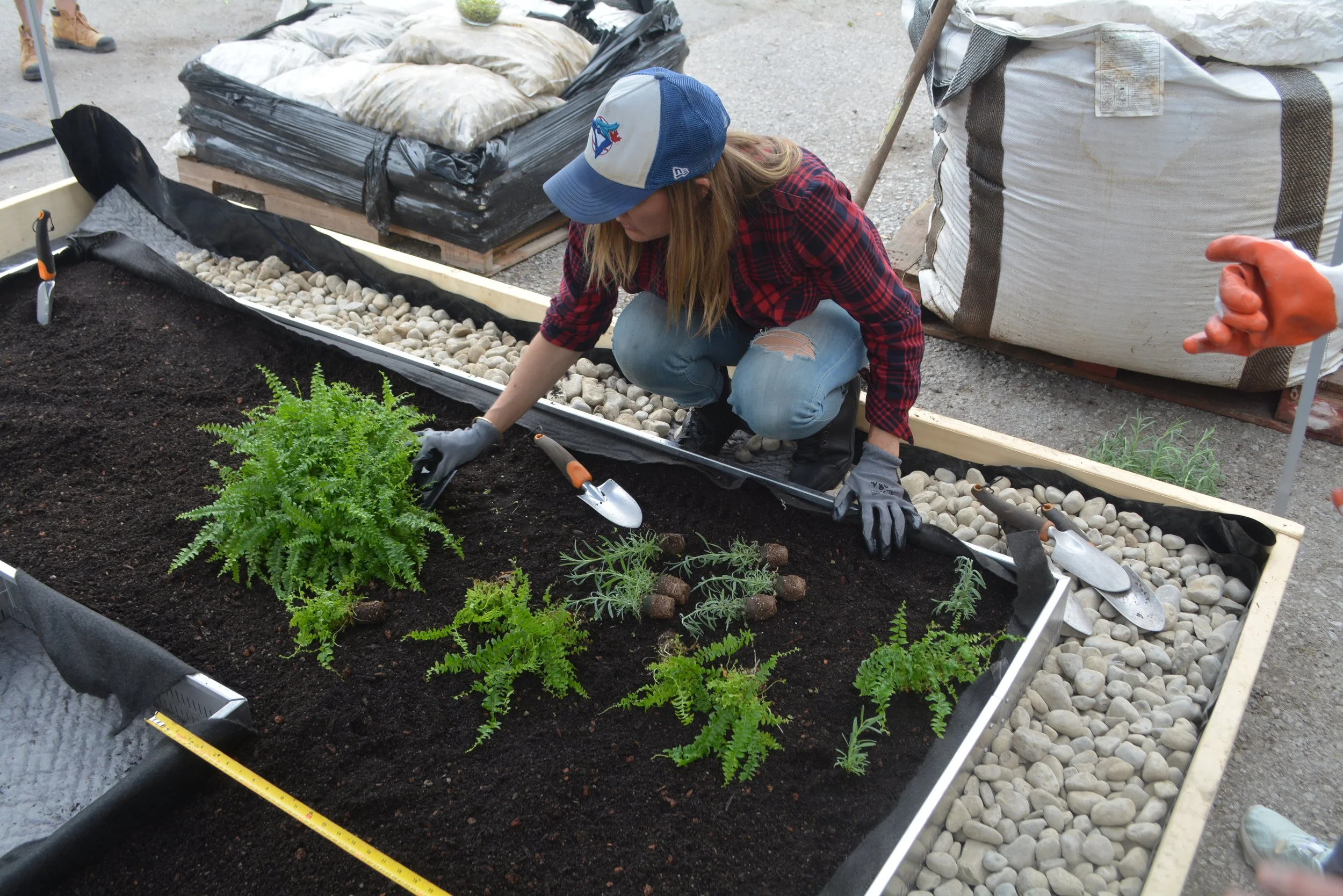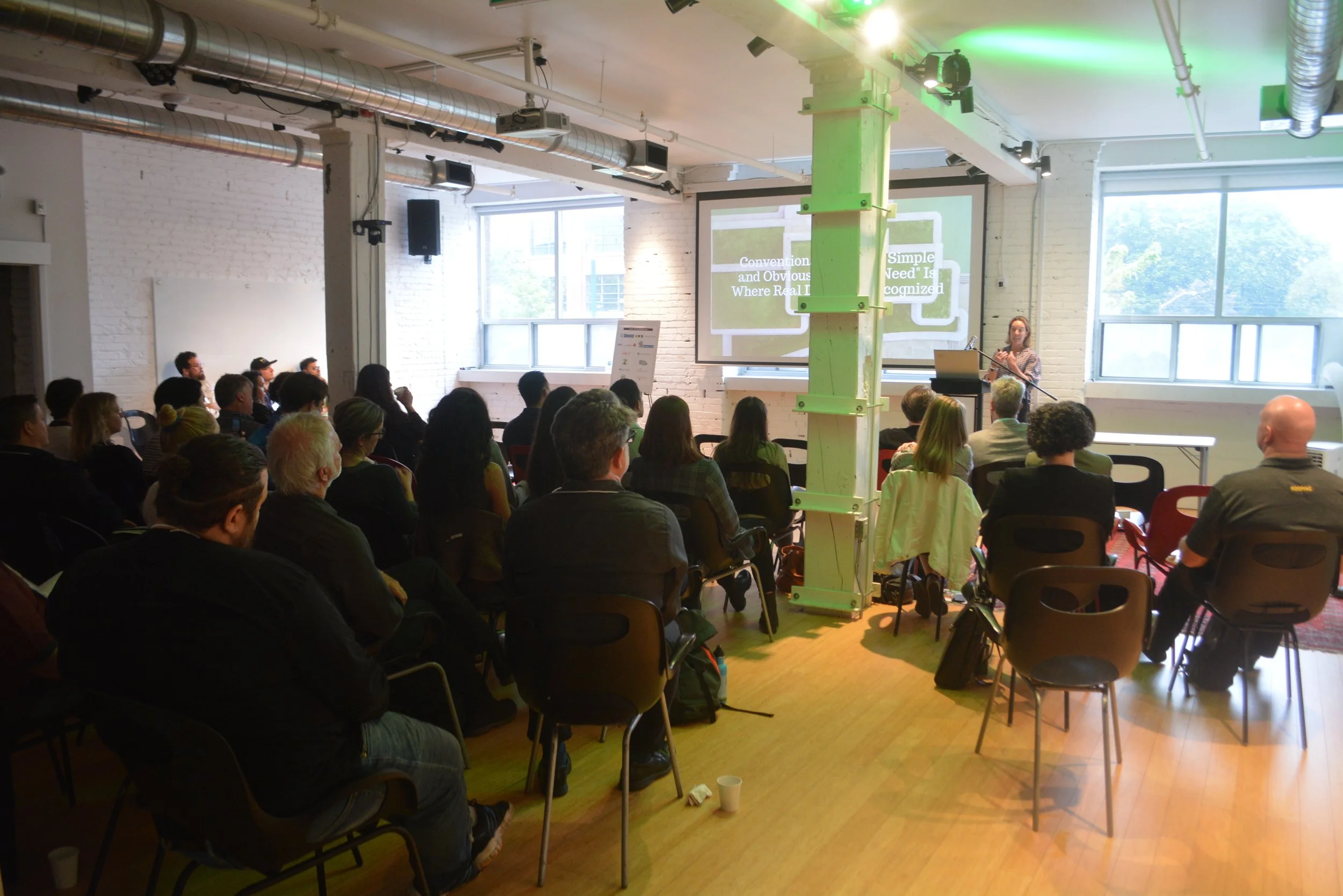Grey to Green: Unveiling the Success of Regional Conferences in Toronto and Boston
Advertisement
Rooftop trees growing on the 7th floor of River City 3 Condominiums - as seen on the River City 3 Tour. Photo: Eric Durnford
Green Roofs for Healthy Cities (GRHC) has re-envisioned the annual Grey to Green Conference by introducing several regional conferences across North America. In addition to the annual conference in Toronto, GRHC expanded its reach to Boston, Grand Rapids, New York City, and Vancouver. This approach has allowed GRHC to explore regional green roof and wall policy opportunities, and allowed attendees to obtain valuable insight into local green infrastructure practices. Take a closer look at the two conferences in Toronto and Boston that were already held, and discover what made them such noteworthy events.
Expert Tours
Tours are an integral part of understanding the tangibility and significance of green infrastructure. These tours offer newcomers and seasoned professionals fresh perspectives on the design, implementation, and maintenance of green infrastructure. The tour guides are experts involved in these projects, who provide valuable information on the projects, and answer attendees' questions.
A handful of green roofs in the east end of Toronto can be seen from the rooftop of River City 3 Condominiums. Photo: Eric Durnford
During the Grey to Green Boston conference, one of the standout tours was the Harvard Science and Engineering Complex Tour. Led by Erik Hegre from Behnisch Architekten. Attendees were captivated by the awe-inspiring structure which uses multiple green roof terraces and a green roof at grade to eliminate stormwater runoff. The building also hosts the world's first hydroformed stainless-steel screen, preventing solar heat from impacting the inside of the building during summer months.
Advertisement
In Toronto, the East End Green Infrastructure Tour took participants on a journey to various locations, including Corktown Common, Baseball Place (Riverside Common Park), Morse Street Junior Public School, and Avling Farm. These tours showcased the staggering amount of green roofs and green infrastructure in Toronto, and highlighted both the benefits and challenges of each project.
GRIMP trainees on the Sherway Garden rooftop for a tour to examine maintenance best practices and challenges after hands on installation training. Photo: Rushil Malik
Green Roof Installation and Maintenance Professional (GRIMP) Training
Adding plugs to the soil on the rooftop. Photo: Rushil Malik
Another highlight of the Toronto Grey to Green Conference was the Green Roof Installation and Maintenance Professional training, a new certification for green roof professionals. The program combines hands-on training and presentations to equip professionals with the essential skills and knowledge required for successful green roof projects. Attendees learned about installing edging, sedums, plugs, modules, and more. The training was led by Karen Liu from Next Level Stormwater Management, who shared invaluable expertise on maintaining and installing green roofs. In Toronto, participants also had the opportunity to explore Sherway Gardens, home to one of Canada's largest commercial green roofs spanning over 9,000 square meters (96,875 square feet). Unfortunately, the Boston GRIMP training had to be canceled due to inclement weather. If you’re interested in joining our rescheduled training on October 16 in Boston, click here.
Plenary Sessions
The plenary sessions served as the centerpiece of the conferences, featuring presentations from industry leaders. The Grey to Green Toronto event gathered over 15 speakers, including keynote speaker Marc Hallé, OALA, FCSLA, Co-president, and Landscape Architect at CCxA. Marc delved into the soul of urban environments, emphasizing the significance of green infrastructure. The Boston Grey to Green Conference also hosted more than 15 speakers, such as Kate England, Director of Green Infrastructure for the City of Boston, who highlighted the city's efforts to enhance climate resilience and green infrastructure initiatives.
Advertisement
Reception
Attendees at the plenary session at the Centre of Social Innovation in Toronto. Photo: Rushil Malik
Beyond the educational sessions, the conferences also provided networking opportunities through a memorable reception. In Toronto, the reception took place at the Toronto Metropolitan University (TMU) Rooftop Farm, located in the Daphne Cockwell Complex. Attendees were treated to hors d'oeuvres and views of the Toronto skyline. This event marked the farm's first public opening, allowing attendees to witness the transformative power of urban farming firsthand. Networking with fellow industry professionals and exploring the farm's urban agriculture initiatives further enhanced the experience. Notably, the TMU rooftop farm hosts The Learning Circle on every third Friday of the month, focusing on experiential learning opportunities for Black youth, students, and community members, centered around the pillars of food literacy, food justice, environmental stewardship, and community healing. See their Instagram for more information.
The Grey to Green Conferences have been a success so far in gathering policy makers, landscape architects, designers, engineers, and pushing forward green infrastructure in these regional communities. Looking ahead, GRHC's next event will take place in Grand Rapids from August 9 to 10, promising an interesting program that includes tours, plenary sessions, and a reception.
Grand Rapids Grey to Green
As a growing city in the Great Lakes region, Grand Rapids faces unique challenges in managing its urban environment. From stormwater runoff to rising temperatures and air pollution, the impacts of climate change are being felt across the city. That's why green infrastructure has become such an important tool in Grand Rapids' efforts to build a sustainable and resilient city.
Grand Rapids Grey to Green will be hosted at Grand Valley State University on August 10 this year. As with our other iterations of the Grey to Green Conference, the plenary session on August 10 will feature a wide range of green infrastructure thought leaders, designers, landscape architects, and stormwater specialists.
The next location for the Grey to Green Conference: Grand Rapids.
The plenary on August 10 will feature a keynote presentation from Randy Hayman, CEO & Commissioner of Philadelphia Water Department, along with presentations from Allmon Forrester, Director of Facilities, Planning, and Sustainability, John Ball Zoo; Rachel Hood, Michigan State Representative; and Sister Damien Marie Savino, F.S.E, Ph. D, Dean of Science and Sustainability, Aquinas College.
August 9 will be dedicated for local tours and an incredible opportunity to visit the John Ball Zoo for a stellar reception and award ceremony. In the morning, we will be visiting the impressive LiveRoof/LiveWall Production facility in Nunica, MI. There, attendees will have the chance to visit the Sedum Stock Beds, view a harvesting demonstration with expert growers at LiveRoof, and see LiveRoof’s homegrown green roof on their production building.
In the afternoon on August 9, we will be visiting the ever-sustainable John Ball Zoo for a tour of the facility led by Allmon Forrester, Directory of Facilities, Planning and Sustainability. Following the tour, attendees are invited to join us at the Bissell Treehouse for a phenomenal reception and Living Architecture Performance Tool Award Ceremony. John Ball Zoo has recently achieved Platinum Certification for their Meerkat Exhibit Green Roof! The reception will commence with remarks from Grand Rapids Mayor Rosalynn Bliss, following the award ceremony while surrounded by the inspiring beauty of the zoo.
Advertisement
Rushil Malik is the Marketing Manager at Green Roofs for Healthy Cities. She is a recent graduate from the University of Western Ontario, receiving an Honours Bachelors of Arts.










